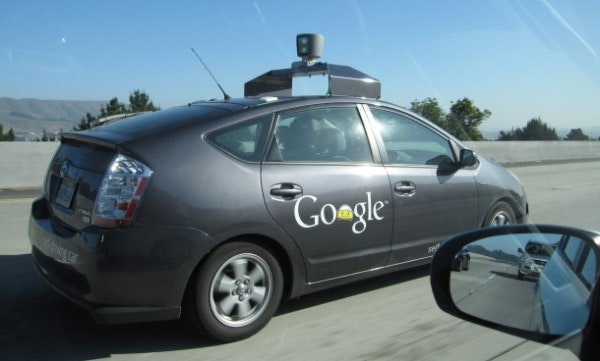Remember shopping at Tower Records for that CD you always wanted? How about Kodak and their stranglehold on film? I’m here to tell you that auto-insurance companies might soon disappear in the same manner — all thanks to Google Inc (NASDAQ:GOOG).
Credit
A couple days ago, I published a column discussing which industries might get disrupted by driverless car technology. In delving further into the topic, I came across Chunka Mui’s column on the topic on Forbes. While we are largely in agreement, much of the data I cite can be attributed to his column and excellent research.

The Vision
Think about the number of hours your car is actually in use. Three hours, perhaps four a day if you really have a long commute? With a huge fleet of robotic (driverless) cars serving large metropolitan areas, almost no one would own a car, because it’d be unnecessary and incredibly expensive.
The largest cost of taking a taxi is the driver’s time. Robots eliminate this cost, potentially reducing expenses by 80%. Any time you need a car in a city, hail one from your phone and a robotic taxi will be there in a minute, coordinated electronically.
Additionally, Google Inc (NASDAQ:GOOG) believes between 77%-90% of traffic accidents are the result of driver error, which will play a huge part in the argument to follow.
What’s at stake?
Driverless cars could help obliterate $200 billion in personal and commercial insurance premiums. (source)
Insurers make money by investing their float — the premiums paid to them, before they’re obligated to pay any of that money out in claims. Warren Buffet of Berkshire Hathaway Inc. (NYSE:BRK.B) is famous for this, and it’s one the reasons insurance is his favorite business. Berkshire Hathaway Inc. (NYSE:BRK.B) wrote over 20 billion dollars worth of premiums last year, The Allstate Corporation (NYSE:ALL) wrote in excess of 26 billion (across all categories.)
To see how driverless cars might affect the insurance business, I called up a local The Allstate Corporation (NYSE:ALL) exec. The affable 70-year-old assured me that it would be 20 years before Google Inc (NASDAQ:GOOG)’s cars cleared all the potholes, resistance, and necessary legislation and actually hit the road. By then, he said, he hoped to be dead.
“Besides,” he told me, “let’s say you’re right and 80% of accidents are eliminated, which I doubt. Do you know how much time and expense we take with claims? This would be a boon to us.” (Chunka Mui’s aforementioned Forbes article indicates that many insurance executives share this opinion.)
What my insurance owner/exec stated is true. But being a competitive market, these savings associated with reduced costs of investigating claims/ paperwork would quickly translate across the industry, in the form of lower premiums.
As for the 20-year waiting period, to quote Mui’s discussion with another exec, merely “a 20% adoption rate of incremental driver-assist technology might result in significant enough reductions in accidents to trigger material reductions in premiums. In other words, insurers will feel the effects of driverless technology long before fully autonomous cars become ubiquitous.”
Car manufacturers already have assisted parking, and all sorts of sensors to help avoid accidents. Even if Google Inc (NASDAQ:GOOG)’s technology isn’t implemented quickly enough to be the silver bullet to the car insurance as the mp3 was to the CD, the trend towards a fully computerized car will undoubtedly quicken.
Outlook
There is no doubt that far more friction remains for Google Inc (NASDAQ:GOOG) to put the driverless car on the road than existed for the mp3 to replace the CD, or for digital photography to replace film.